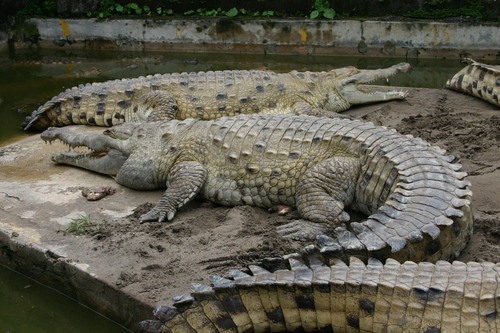
Orinoco Crocodile
The Orinoco crocodile, with its striking pale hue and elongated snout, thrives in Venezuela's Orinoco River. A masterful fish hunter, this majestic reptile plays a pivotal role in aquatic ecosystems but faces critical threats from habitat destruction and illegal hunting.
225.0 - 400.0 kg
Weight
Length: 3.6576 - 5.1816 m
Size
Grey, Yellow, Black, Tan, Green, Dark
Color
Medium
Aggression
Critically Endangered
Conservation Status
Decreasing
Population Trend
Characteristics
The Orinoco crocodile (Crocodylus intermedius) is native to the Orinoco River basin in Venezuela and Colombia. It is one of the largest crocodilian species, reaching up to 6.6 meters in length. Notable for its pale coloration and long, slender snout adapted for catching fish, the species is critically endangered due to habitat loss and poaching.
Distribution Range of the Orinoco Crocodile
Crocodylus intermedius, commonly known as the Orinoco crocodile, is native to the Orinoco River basin in Venezuela and Colombia in South America. This species was historically found throughout the extensive river systems of the Orinoco basin.
Orinoco Crocodile's Habitat
Environmental Conditions
The Orinoco crocodile primarily inhabits freshwater environments such as rivers, floodplains, and freshwater lagoons. The region is characterized by a tropical climate with distinct wet and dry seasons. During the wet season, these crocodiles take advantage of the expanded water bodies for hunting and nesting.
Ecological Niche
Crocodylus intermedius is an apex predator within its habitat, preying on a variety of aquatic and terrestrial animals, including fish, birds, and mammals. Its ecological role is crucial for maintaining the balance within the ecosystem by controlling prey populations. The species is adapted to a life both in water and on land, with powerful limbs and a robust tail for swimming.
Copyright @ Nature Style Limited. All Rights Reserved.
 English
English